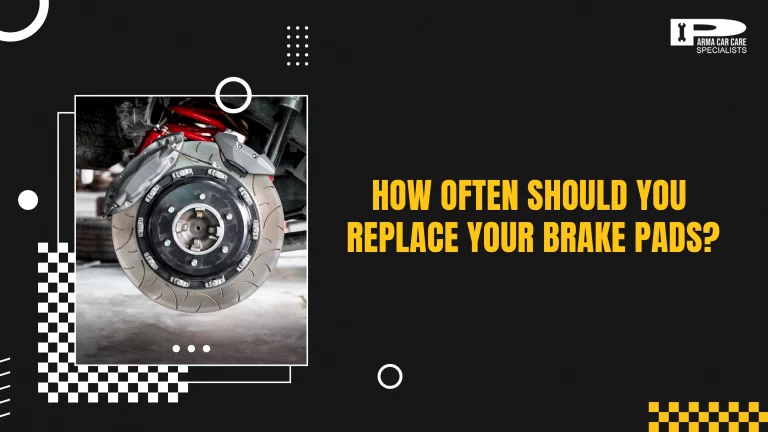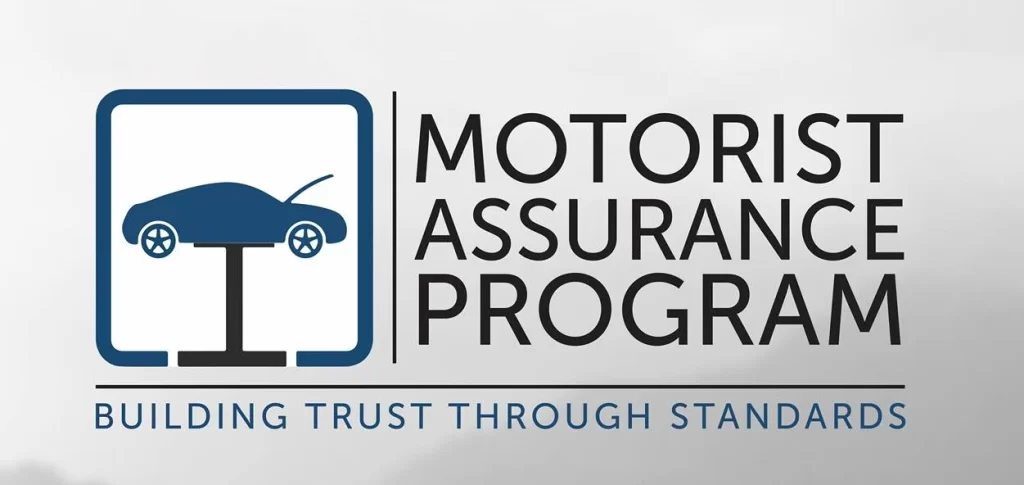Your daily maintenance checklist should include several key tasks. Start by checking fluid levels—engine oil, coolant, brake fluid, transmission fluid, and windshield washer fluid. Next, measure tire pressure and inspect tires for wear or damage. Don’t forget to verify that all lights and signals, including headlights and brake lights, function correctly. Examine your windshield for cracks and assess wiper blades for wear. Finally, confirm your emergency kit is stocked with essential tools and supplies. These steps enhance safety and reliability. There’s more you can do to keep your vehicle running smoothly.

Key Takeaways
- Check fluid levels including engine oil, coolant, brake fluid, and transmission fluid to ensure optimal vehicle performance.
- Measure tire pressure and inspect for wear or damage to enhance safety and driving efficiency.
- Verify all lights and signals function correctly for visibility and communication on the road.
- Assess windshield condition and wiper blades for clarity and effective cleaning during adverse weather.
- Review emergency kit contents regularly to ensure all necessary tools and supplies are available in case of an emergency.
Inspecting Fluid Levels: A Crucial Daily Task
Each morning before you hit the road, it’s important to inspect your vehicle’s fluid levels. This quick check is a critical part of your car maintenance checklist.
Start by examining the engine oil; it should be at the recommended level and not appear dirty or gritty. Next, check the coolant level in the reservoir—make sure it’s between the minimum and maximum marks.
Don’t forget the brake fluid; it’s key for safe stopping power. Look at the transmission fluid as well—proper levels and a clean, reddish color indicate good health. Finally, check the windshield washer fluid to maintain visibility.
Incorporating this into your preventative car maintenance checklist can save you from larger issues down the line. Low fluid levels can lead to engine overheating or transmission problems, which are costly to repair.
Tire Pressure and Condition Check: Ensuring Safety and Efficiency
After checking your vehicle’s fluid levels, it’s time to focus on the tires.
Start with a tire pressure and condition check. Proper tire pressure is essential for safety and fuel efficiency. Use a reliable tire pressure gauge to guarantee each tire is inflated to the manufacturer’s recommended PSI. Don’t forget the spare tire; it’s often overlooked.
Next, inspect the tires’ condition. Look for any signs of wear or damage, such as cracks, bulges, or uneven tread. Use the penny test: insert a penny into the tread; if you can see all of Lincoln’s head, it’s time for new tires.
Regularly rotating your tires can also promote even wear, so keep this in mind for your regular car maintenance checklist.
Checking your tires should be a routine part of your daily maintenance. It not only enhances your vehicle’s performance but also safeguards your safety on the road.
Don’t neglect this important task; a few minutes spent on tire care can save you from costly repairs and dangerous driving situations down the line. Stay vigilant, and keep your tires in top shape!
Lights and Signals: Visibility and Safety Essentials
Checking your vehicle’s lights and signals is important for your safety and the safety of others on the road. As part of your car maintenance checklist template, make it a habit to inspect all lights regularly.
Start with your headlights; verify they’re functioning properly and adjust if necessary for peak visibility. Don’t forget to check your high beams—these are essential for nighttime driving.
Next, examine your turn signals and hazard lights. Make sure they blink at a consistent rate. If a signal is out, replace it promptly to avoid confusion for other drivers.
Check your brake lights as well; they should illuminate brightly when you press the brake pedal.
Incorporating these checks into your standard car maintenance checklist can help you stay proactive. Regularly verifying your lights guarantees that you remain visible, especially during low-light conditions or inclement weather.
Windshield and Wipers: Clear Vision is Key
Your windshield and wipers play an essential role in maintaining clear visibility while driving, especially during rain or snow. To guarantee you’re safe on the road, include a thorough check of these components in your basic car maintenance checklist.
Start by inspecting your windshield for any cracks or chips. Even small imperfections can obstruct your vision, so consider repairing or replacing damaged glass.
Next, assess your wiper blades. Look for signs of wear, such as fraying or stiff rubber. If they’re not making proper contact with the windshield, it’s time for a replacement.
Don’t forget to check your windshield washer fluid levels. Keeping this fluid topped off guarantees you can clear grime and debris whenever necessary.
When you use your wipers, listen for any unusual noises, which may indicate a need for lubrication or replacement.
A quick inspection of your windshield and wipers should be part of your daily checklist for car maintenance. Regular maintenance helps prevent visibility issues and enhances your overall driving experience.
Make this simple check a habit, and you’ll drive with confidence no matter the weather.
Battery and Electrical System: Preventing Unexpected Breakdowns
A reliable battery and electrical system are crucial for preventing unexpected breakdowns on the road. To keep your vehicle running smoothly, include this significant aspect in your monthly car maintenance checklist.
Start by checking the battery terminals for corrosion; clean them if necessary. Verify the connections are tight, as loose connections can lead to power loss.
Next, test the battery voltage. A healthy battery should read around 12.6 volts when the engine is off. If it’s below 12.4 volts, consider recharging or replacing it.
Don’t forget to inspect the alternator as well—make sure it’s charging the battery adequately and that the drive belt is in good condition.
For car checklist maintenance, regularly review your vehicle’s electrical components. Check that all lights, including headlights, brake lights, and turn signals, are functioning properly.
Test your car’s fuses and replace any that are blown.
Emergency Kit and Tools: Always Be Prepared
After verifying your battery and electrical system are in top shape, it’s time to focus on preparedness for unexpected situations. An emergency kit is essential for any driver, especially if you’re following an old car maintenance checklist.
Start by gathering a few basic tools: a jack, tire iron, and a spare tire. These are vital for any flat tire situation.
Next, include a first aid kit, flashlight, and jumper cables in your emergency supplies. Having these items on hand can make a significant difference when you’re in a pinch.
You should also add basic non-perishable food items and water to your kit, just in case you’re stranded for a while.
Don’t forget to have a copy of your car service maintenance checklist in your glove compartment. This way, you can easily reference important maintenance records or contact information for roadside assistance.
Regularly check and replenish your emergency kit to confirm everything’s in working order. By being prepared, you’ll give yourself peace of mind and increase your chances of handling any roadside emergency efficiently.
Frequently Asked Questions
How Often Should I Perform Daily Maintenance Checks?
You should perform daily maintenance checks on your vehicle to guarantee peak performance. Regular inspections help you catch issues early, saving time and money while keeping your car running safely and efficiently. Don’t skip this essential routine!
What Tools Do I Need for Daily Maintenance?
For daily maintenance, you need basic tools like a tire pressure gauge, oil dipstick, multi-tool, flashlight, and a first aid kit. These essentials help you quickly assess your vehicle’s condition and address any issues.
Can I Perform These Checks Without Professional Help?
Absolutely, you can perform these checks without professional help! With a little guidance and the right tools, you’ll easily monitor your vehicle’s condition, ensuring it runs smoothly and efficiently. Just stay consistent and attentive!
What Are Signs of Neglecting Daily Maintenance?
Neglecting daily maintenance shows up as unusual noises, warning lights, decreased performance, and fluid leaks. You’ll notice increased wear on parts and reduced fuel efficiency, leading to costly repairs and compromised safety. Don’t ignore these signs!
How Can I Remember My Daily Maintenance Checklist?
To remember your daily maintenance checklist, create catchy cues. Pair tasks with pleasant practices, like checking tires while sipping coffee. Set reminders on your phone, making maintenance a manageable, mindful part of your routine.
Conclusion
By incorporating these daily maintenance tasks into your routine, you’re not just protecting your vehicle—you’re investing in peace of mind. Think of it as a small price to pay for the confidence of knowing your car is ready for the road ahead. After all, a little daily care can go a long way in preventing costly repairs and unexpected breakdowns. So, grab that checklist and make your ride as reliable as your ambition!
















